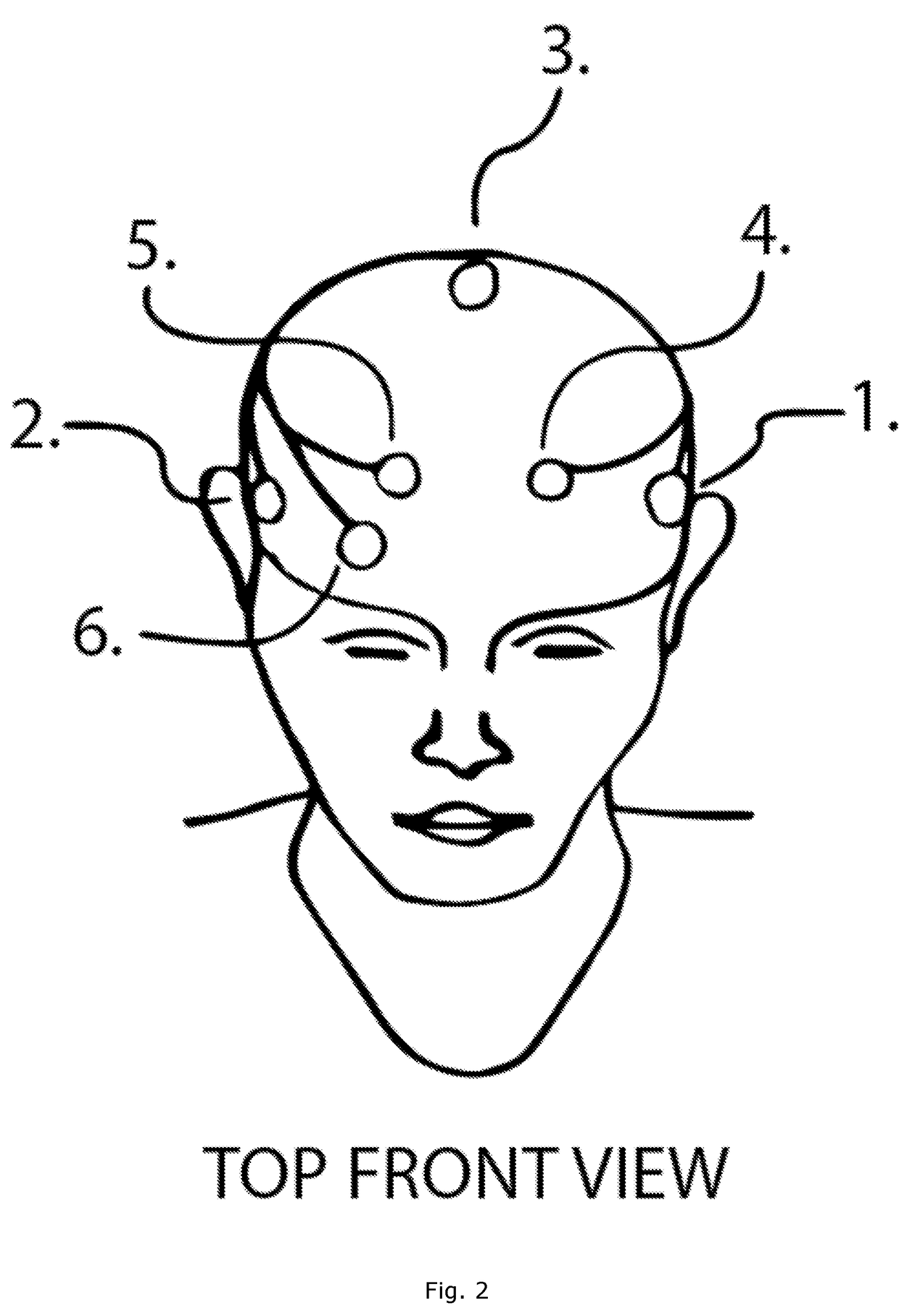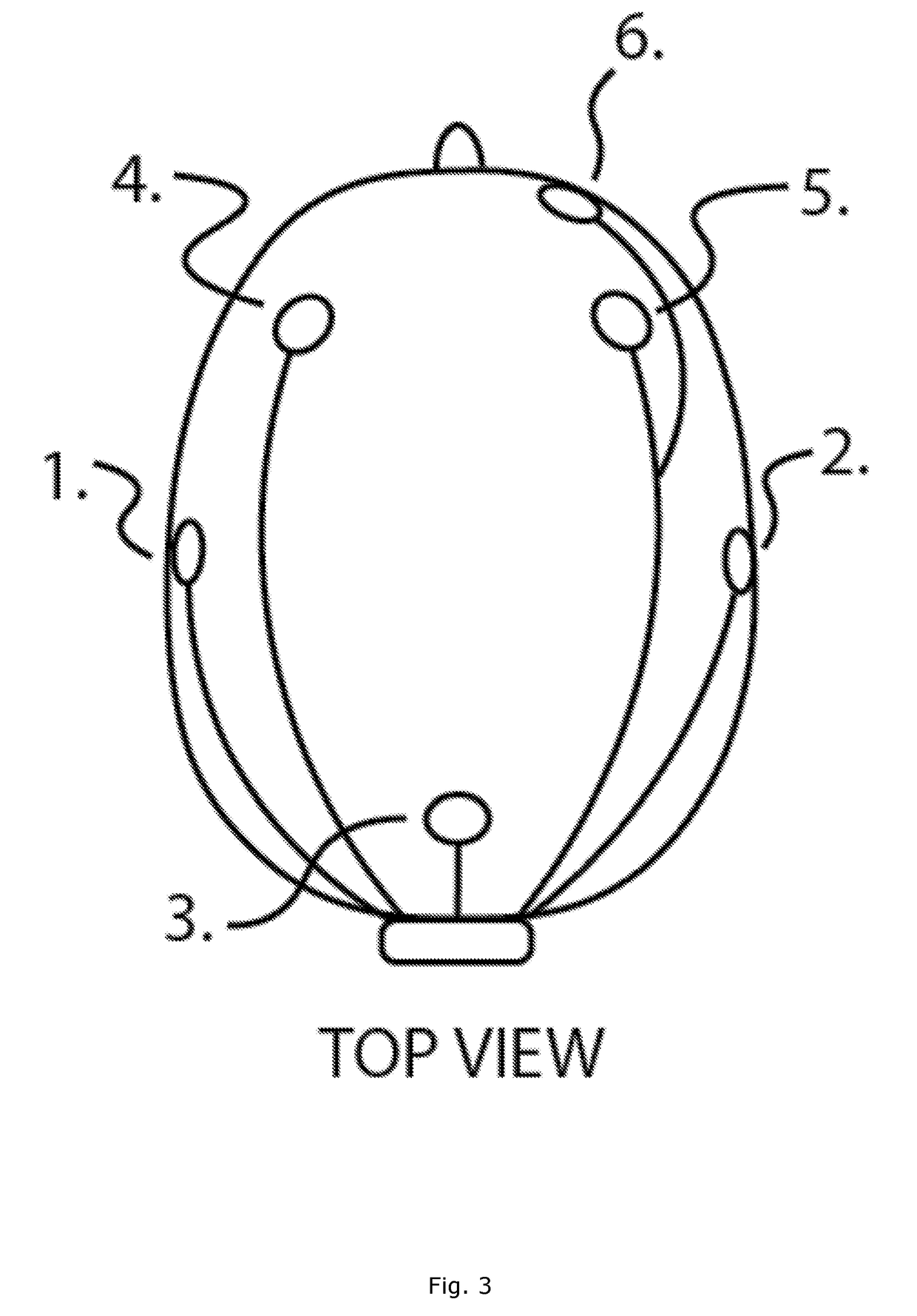Transcranial electrical stimulation device having multipurpose electrodes
a transcranial electrical stimulation and electrode technology, applied in external electrodes, artificial respiration, sensors, etc., can solve the problems of not having programmable multi-purpose electrodes, more electrodes, and devices without three or more electrodes. , to achieve the effect of not being programmable, the device cannot have three or more electrodes, and no programmable multi-purpose electrode disclosur
- Summary
- Abstract
- Description
- Claims
- Application Information
AI Technical Summary
Benefits of technology
Problems solved by technology
Method used
Image
Examples
example 1
tion
[0457]In example 1 we present findings from a brain scanning study performed to investigate the brain activity and brain activity involved in individual free improvisation versus response improvisation, as a measurement for individual and group creativity.
[0458]Study Design
[0459]The study was performed using functional Magnetic Resonance Imaging (fMRI). Neuroimaging recordings were conducted on a 3-Tesla whole-body MR system with a GE 8 channel HD head coil (GE Signa 3.0 Tesla HDx—Twinspeed gradient system, Milwaukee, United States of America). It involved 27 neurologically healthy male musicians with a mean age of 28 (range 24-36). All participants were professional musicians and had normal hearing and were right-handed, as confirmed by the Edingburgh Handedness Inventory (Oldfield, 1971).
[0460]None were taking medication or had any history of neurological or psychiatric illness.
[0461]Data from two subjects were discarded due to normalization errors (i.e. abnormal brain size pr...
experiment a — individual creativity
Experiment A—Individual Creativity
[0464]In the first experiment participants listened to a classical vamp (a vamp is a familiar sequence of cords, which provides the performer with the harmonic framework upon which to improvise) and were asked to either tap the main meter of the vamp or to freely improvise to it. Across experiment one, there were a total of 64 trials per participant of either the [Main Meter] or [free improvise] condition. Each trial lasted for eight seconds and was always followed by a jittered [Rest trial] lasting between three and nine seconds.
experiment b
vity
[0465]The second experiment was constructed the same way as the first, asides from improvisations being performed to simulate group creativity. Subjects first heard an improvisation performed by a ‘group’ member and were then asked to either: tap the main meter [Main Meter], imitate the improvisation heard [Imitate] or improvise an answer [Response Improvisation]. With the same approach as in the first experiment, each condition had a duration of eight seconds, but differed in that participants listened the first four seconds (the call) and responded in the following 4 seconds (the response), in accordance with the task condition. As in the first experiment, each trial was followed by a jittered [Rest] trial lasting between three and nine seconds. Throughout each trial a metronome, in corresponding tempo, was presented in both the call and response situation.
[0466]Statistical Analysis of the fMRI Data
[0467]Across all participants, a total of 808704 brain slices were obtained (39...
PUM
 Login to View More
Login to View More Abstract
Description
Claims
Application Information
 Login to View More
Login to View More - R&D
- Intellectual Property
- Life Sciences
- Materials
- Tech Scout
- Unparalleled Data Quality
- Higher Quality Content
- 60% Fewer Hallucinations
Browse by: Latest US Patents, China's latest patents, Technical Efficacy Thesaurus, Application Domain, Technology Topic, Popular Technical Reports.
© 2025 PatSnap. All rights reserved.Legal|Privacy policy|Modern Slavery Act Transparency Statement|Sitemap|About US| Contact US: help@patsnap.com



